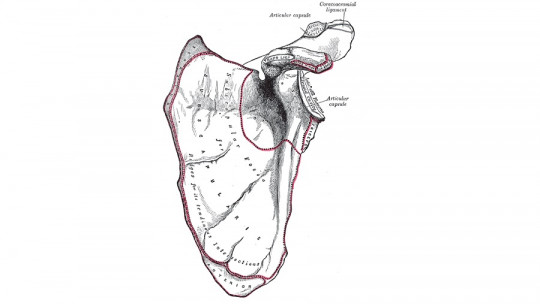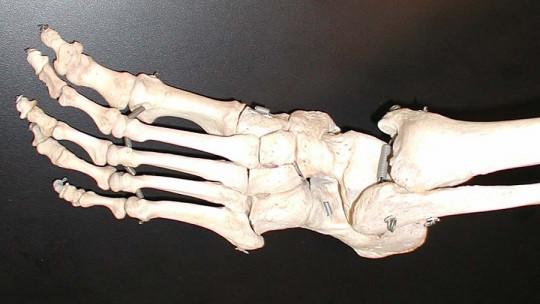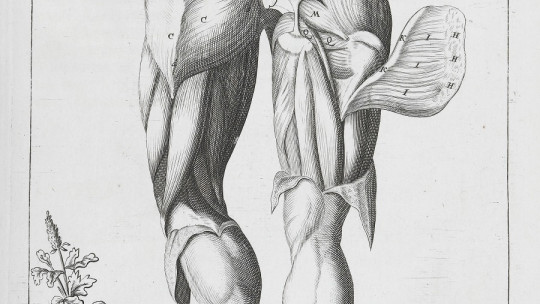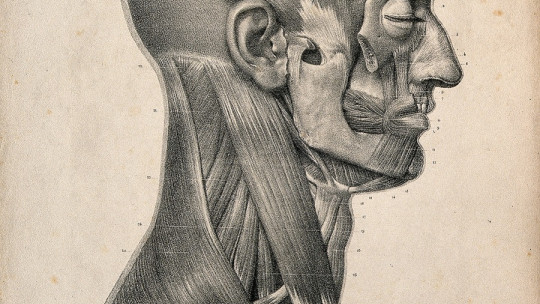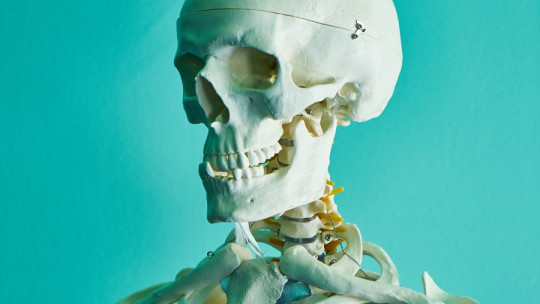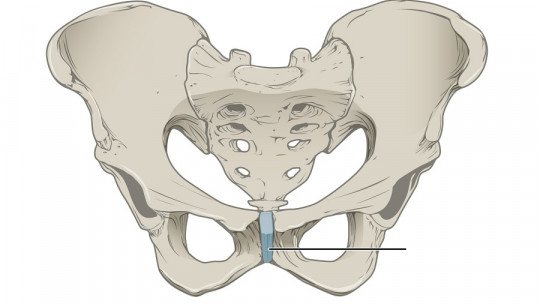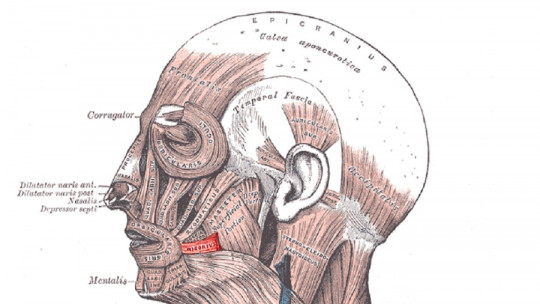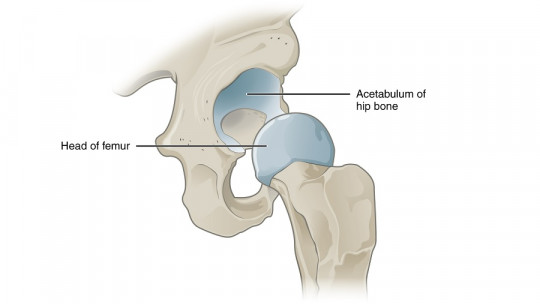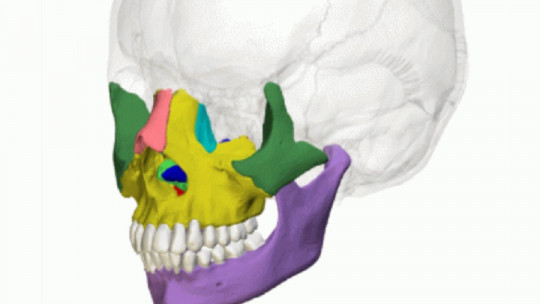
We see it every day in the mirror and, although we easily recognize it as ours, many of us know little or nothing about what lies beneath the skin.
The face is a part that is familiar to everyone, almost the most familiar. It is what gives us, so to speak, external personality since in a world where appearances matter, face is the most important thing: it is our letter of introduction.
Under it we can find many bones, many of them unknown to most people since, despite being so important, it is the anatomical part that is studied the least in schools. That is why we bring here the list with the main bones of the face what structures they make up and what they are inserted with.
What are the bones of the face?
Although we are not very narcissistic people, the face is that part of the body that worries us the most, since our appearance depends a lot on it. But although it is that body part that we see every day, looking in the mirror while we get ready in the morning, it is also that great unknown since the layers of skin that are found in it prevent us from seeing the bone complexity that it has. .
Anatomically, we can define the face as a bone conglomerate located in the lower and anterior part of the head This structure is made up of many bones despite being a relatively small region, with the total number of bone structures that can be found in it being around fourteen. Of these fourteen bones, six are paired and two are odd or single, located near the facial midline and housing the organs of most of the senses in their various cavities.
1. Upper jaw
The upper jaw is composed of a pair of short, irregular bones that are flattened from the inside out This has two faces, one internal and one external, and also four edges and four angles. Its lower edge serves as an insertion for the teeth of the upper arch, that is, the teeth of the upper jaw.
This structure is articulated with:
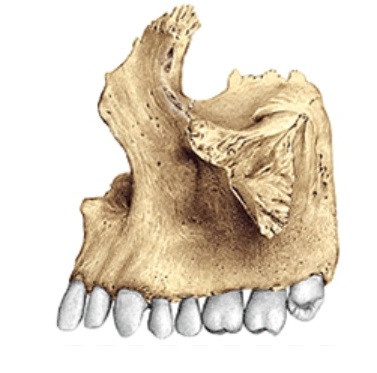
2. Palatines
The palatines are a pair of short and irregular bones, one on the right side and the other on the left side. They are located behind the maxilla with which they articulate forwards
These bones articulate with:
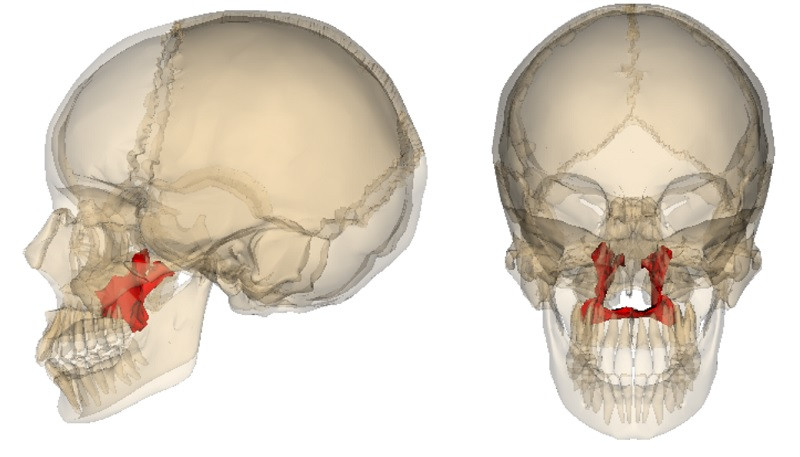
3. Zygomatic or malar bone
The zygomatics are two short, irregular bones located on the outermost part of the face, just at the level of the cheeks and, in fact, they are also known as the malar bones or the cheekbones. Its shape is flattened from outside to inside and, having four edges with their respective four angles, its shape suggests that of a quadrilateral. It has two faces, one external and one internal, which are located on the lower side and lateral to the front.
The zygomatics articulate with:
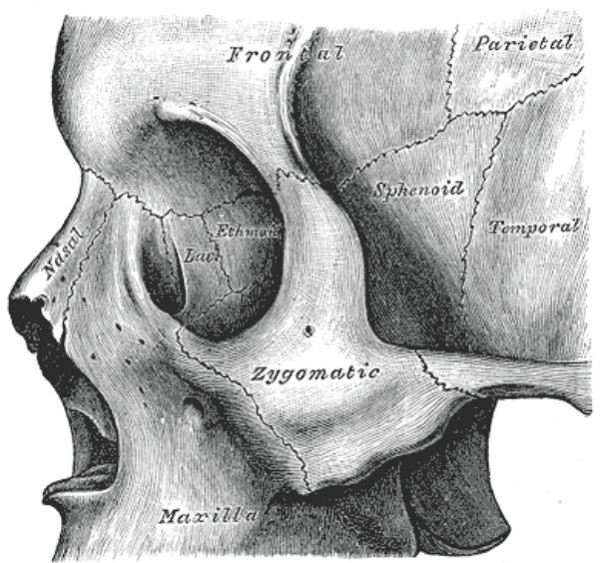
4. Nasal bone
The nasal bone, also called the nasal bone, It is a paired bone placed on each side of the midline and located just at the top of the human nose being in fact the only exterior structure in that region that is composed of bone tissue, specifically a quadrilateral sheet with two faces and four edges.
This structure is articulated with:
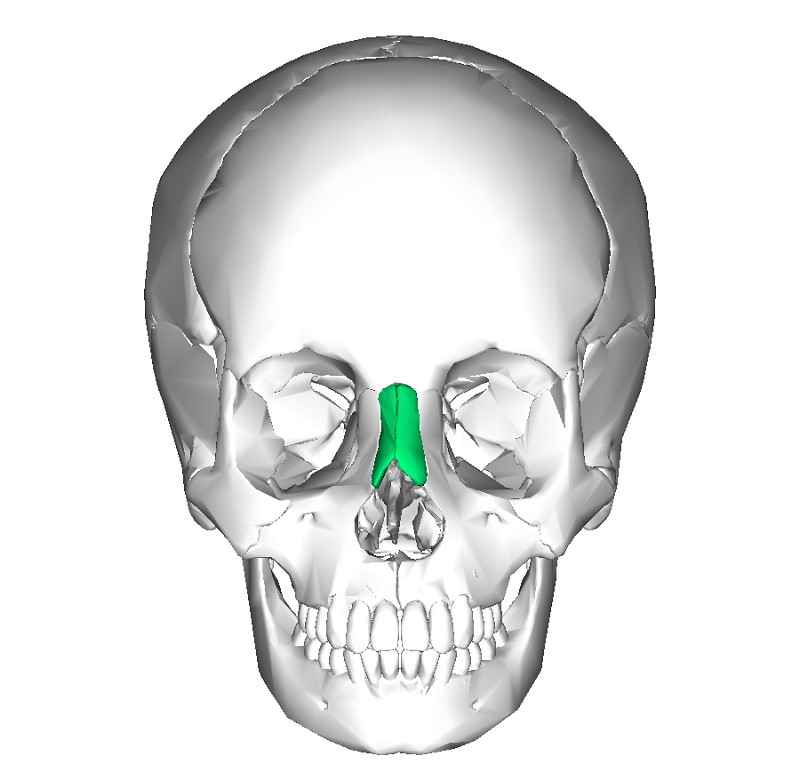
5. Turbinates or lower nasal conchae
The turbinates are two bones located at the bottom of the nasal passages Their other name, inferior nasal conchae, indicates that they are part of the nasal passages. They have two faces, one internal and one external, two edges and two extremities.
The turbinates of the face are articulated with:
- The ethmoid and the upper jaw above.
- The palatine from behind.
- The tear ducts ahead.
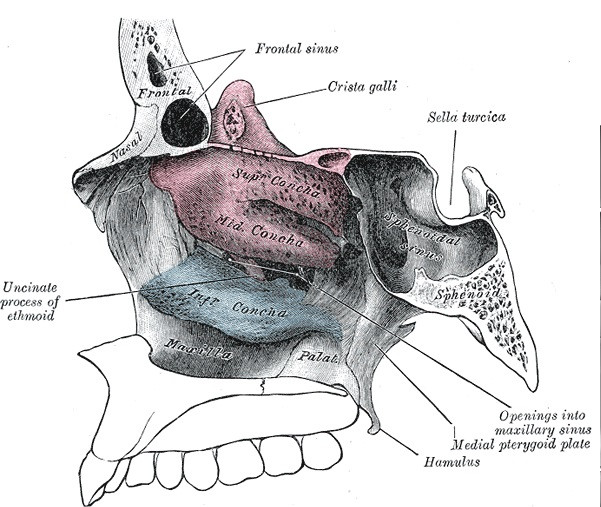
6. Unguis or lacrimal bones
The lacrimal bones are a paired bone that is located in the anterior part of the inner surface of the fossa that makes up the eye orbit. They are also characterized because they contribute to the formation of the nasal passages and constitute a small bony sheet Its shape is quadrilateral and irregular, having two faces and four edges.
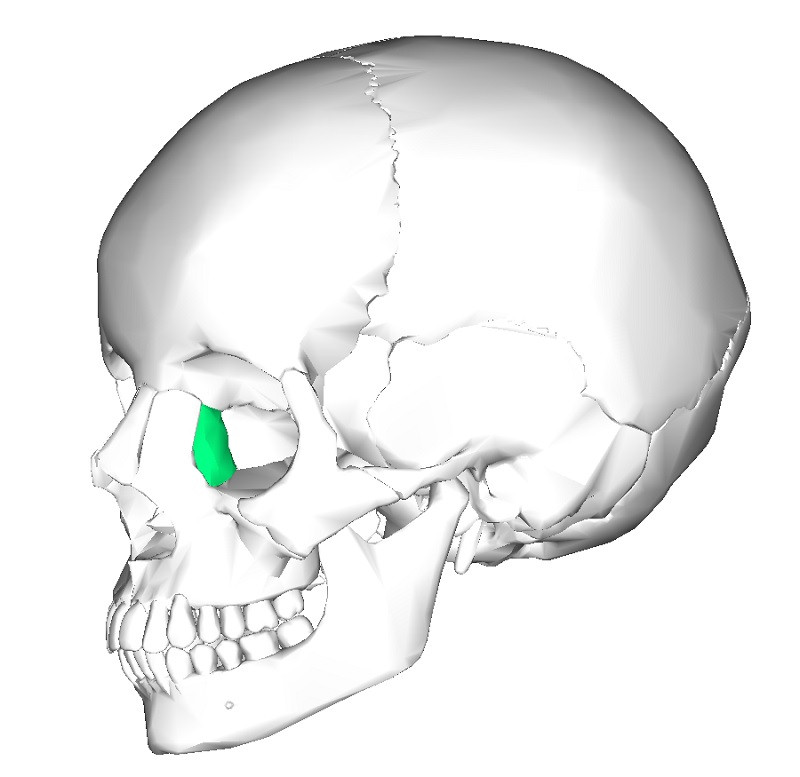
- You may be interested: “Osteology: what it is and what this branch of anatomy studies”
7. Vomer
The vomer is a bone with a curious name that happens to be It is unique and odd, unlike most of the bones that make up the face It is located in the facial midline, constituting the posterior part of the nasal septum. It is a very thin quadrilateral sheet that has two faces and two edges.
The vomer is articulated with:
- The ethmoid and sphenoid above.
- The upper jaws and the palatines below.
- It constitutes part of the nasal septum.
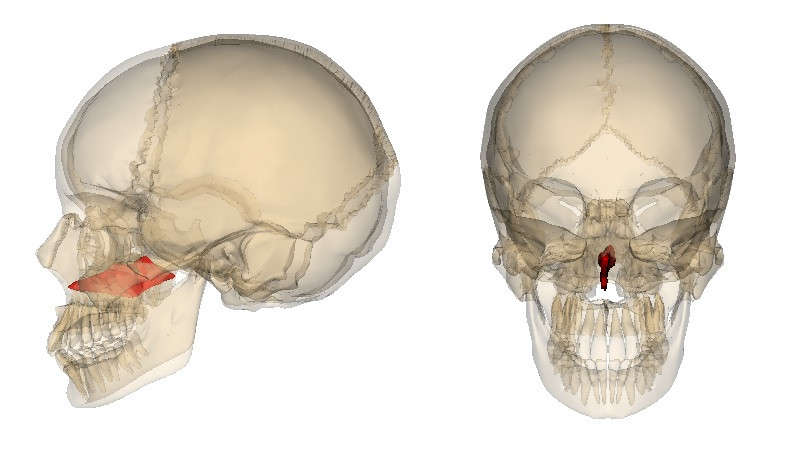
8. Lower jaw or mandible
The lower jaw is a large, single, irregularly shaped but symmetrical bone located in the center of the facial midline, although in its lower part. It is shaped like a horseshoe and is attached to other bones through a movable joint, which gives it a certain freedom of movement.
It is thanks to this joint that we can move the lower jaw to be able to chew, speak or gesture. It has two faces, one anterior and one posterior, two lateral extremities or ascending branches and two edges, an upper one that gives insertion to the teeth of the lower arch.
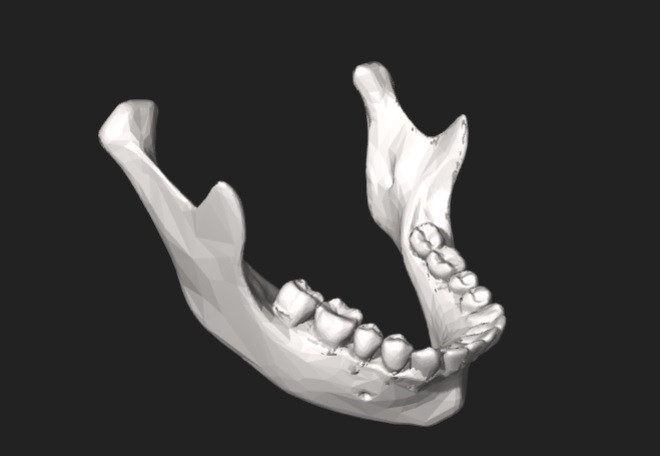
Bony joints of the face
Now that we have seen the 8 types of bones of the face, which actually constitute the 14 bones of this anatomical region, let’s talk about the bony unions they form. Four main structures arise from the union of the bones of the face: the eye orbit, the nasal passages, the pterygomaxillary fossa and the palatine vault.
1. Eye orbit
The eye orbits They are excavated cavities widely recognizable as the holes where the eyes are located These cavities are between the face and the rest of the skull and are characterized by being located on both sides of the face, one on the right and the other on the left, presenting a quadrangular pyramid shape with an anterior base.
Inside the orbit we can see four walls:
- Superior or roof: it is formed by the horizontal portion of the frontal and the lesser wing of the sphenoid.
- Inferior or floor: formed by the pyramidal process of the upper jaw, the orbital process of the zygomatic and the orbital process of the palatine.
- Internal: formed by the ascending process of the upper jaw, the lacrimal ducts and the orbital plate of the ethmoid.
- External: formed by the greater wing of the sphenoid and the orbital processes of the zygomatic and the frontal bone.
2. Nostrils
We can describe the nasal passages as long flattened corridors, which are characterized by being transversely located to the right and left of the midline Each of them has four walls and two openings, one front and one rear. Going deeper into these four walls, we observe:
- External wall: formed by six bones, which are the upper jaw, the sphenoid, the palatine, the lacrimal, the lower nasal conchae and the ethmoid.
- Internal wall: it is made up of the nasal septum, which in turn is formed by the vomer and the perpendicular plate of the ethmoid.
- Upper wall or roof: it is formed by the bones of the nose, the nasal spine of the frontal bone, the horizontal plate of the ethmoid and the body of the sphenoid.
- Lower wall or floor: it is formed by the palatine process of the upper jaw and the horizontal lamina of the bone.
3. Pterygomaxillary fossa
The pterygomaxillary fossa is a small region located inside the zygomatic fossa This structure has the shape of a quadrangular pyramid with four walls, a base and a vertex.
4. Palatine vault
The palatine vault is a horseshoe-shaped region that is limited behind the posterior edge of the palatine. In front and on the sides is the alveolar edge of the upper jaw.

